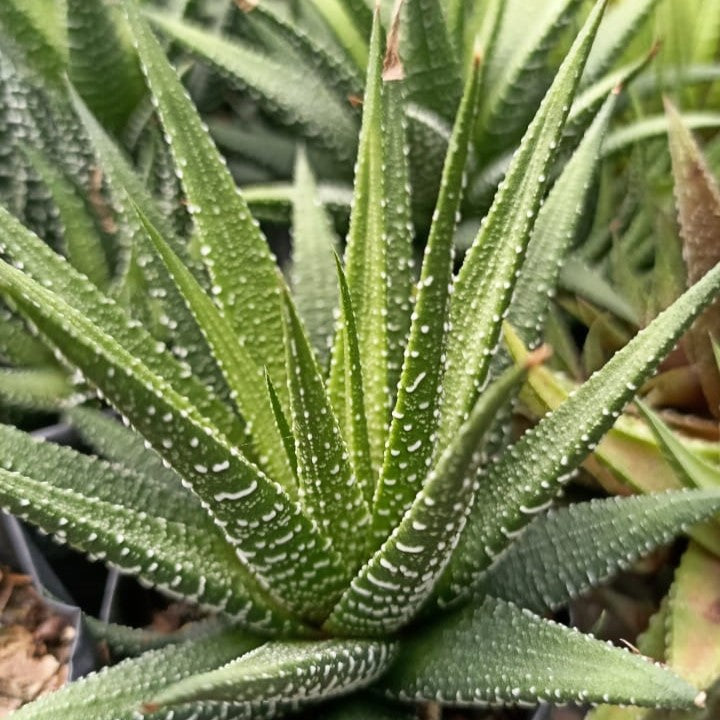Most succulents need to be watered twice a week during summers and only once in monsoon & winters. Varieties like Haworthias, Crassulas and Gasterias are well suited for low-light indoors and window-sills. If the leaves get too bulky, it is a sign of overwatering & if the leaves look shrivelled it is a sign of less watering.
As a general rule of thumb, all the ones with colourful leaves like Echeverias, Sedeveria and Graptopetalum like bright sunlight and semi shade in extreme summers. They cannot be kept indoors or in full shade. All succulents love morning sun.
You can fertilise your succulent once a month.
Watering tips : Make sure NOT to water on the plant itself. Water directly in the soil. You can use a cup or a glass to make sure the water does not spray on leaves. When watering, make sure water comes out of the drainage hole.
You can check our video on how to water succulents on : https://youtu.be/GnzodkMYcmg
Most succulents need to be watered twice a week during summers and only once in monsoon & winters. Varieties like Haworthias, Crassulas and Gasterias are well suited for low-light indoors and window-sills. If the leaves get too bulky, it is a sign of overwatering & if the leaves look shrivelled it is a sign of less watering.
As a general rule of thumb, all the ones with colourful leaves like Echeverias, Sedeveria and Graptopetalum like bright sunlight and semi shade in extreme summers. They cannot be kept indoors or in full shade. All succulents love morning sun.
You can fertilise your succulent once a month.
Watering tips : Make sure NOT to water on the plant itself. Water directly in the soil. You can use a cup or a glass to make sure the water does not spray on leaves. When watering, make sure water comes out of the drainage hole.
You can check our video on how to water succulents on : https://youtu.be/GnzodkMYcmg
Haworthia fasciata - Zebra Cactus
Family
Aloaceae
Origin
Eastern Cape, South Africa
Description
Haworthia fasciata is a small succulent, up to 4 inches (10 cm) tall. The triangular shaped leaves are green with narrow white crested strips on the outside. At the end of the leaf is a non acute spine. The white flowers appear in October and November, on the end of an inflorescence. The species has similar markings to Haworthia attenuata. The two are therefore frequently confused with each other
Haworthia are not considered difficult houseplants to grow. They are often grown in small clusters in wide, shallow dishes. Over time, clusters will naturally enlarge as the mother plant sends off small plantlets. When the cluster has outgrown its dish, repot in the spring or early summer into a new wide and shallow dish with fresh potting soil.
Environment
Full sun to filtered shade. Average Water Needs; Water regularly; do not over water.
As with all succulents, the most dangerous situation is too much water- they should never be allowed to sit in water under any circumstances. Haworthias will survive on less light than many other succulents, however, in order to produce their colorful foliage, they need some sun.
These decorative little plants can be grown in interesting containers such as tea cups and even miniature baby shoes. Make sure the container had adequate drainage. If it doesn t, it might be a good idea to pop the plant out of its container and add a layer of gravel to the bottom to reduce the wicking action of the soil above.
Landscape Use
Suitable for Container, Rock Garden & Xeriscaping


















